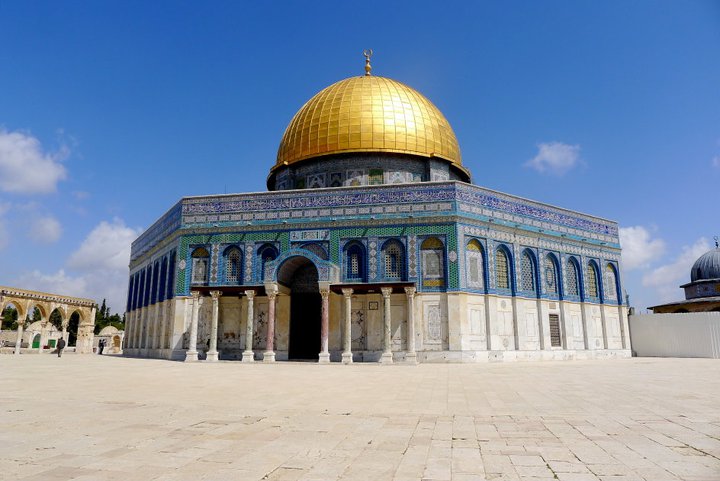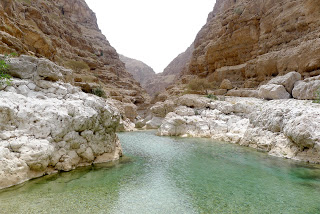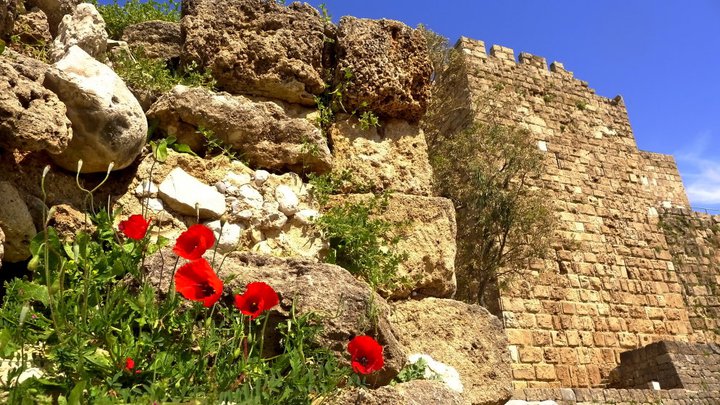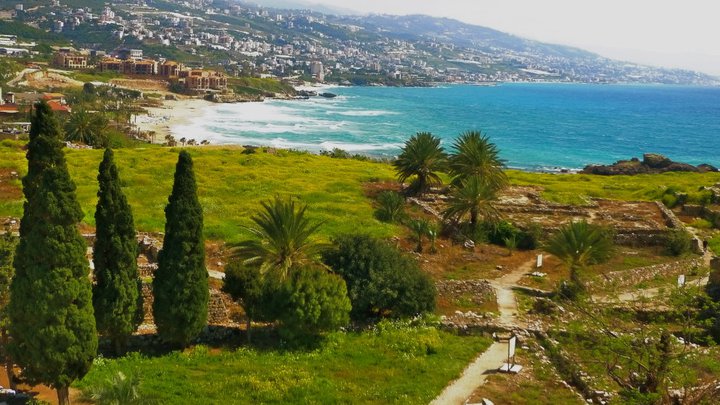
Three Day Lebanon Itinerary for Beirut and Beyond
Though it is the smallest country in continental Asia, Lebanon packs a lot of punch. The country is home to snow-capped mountains, cedar forests, lush green valleys and a beautiful coastline. It claims the oldest continually inhabited city in the world (though Damascus shares the claim), hosts a multitude of Roman ruins and boasts nightlife comparable to that of many cities in Western Europe.
One might think that, with such a wealth of attractions, the small Middle Eastern country would be a magnet for travelers the world over.
But Lebanon has made the news for all the wrong reasons in recent years.
And as a result, it remains an off the beaten path destination full of wonderful and little-known surprises.
A Long Weekend in Lebanon
While living in Jordan, I had the opportunity to travel to Lebanon for a long holiday weekend.
Ideally, I would have dedicated more than three days to Lebanon, for the country has a wealth of places to visit that cannot be adequately discovered in three days.
Yet, due to time constraints, I had to make the most out of my limited time in the small Middle Eastern country.
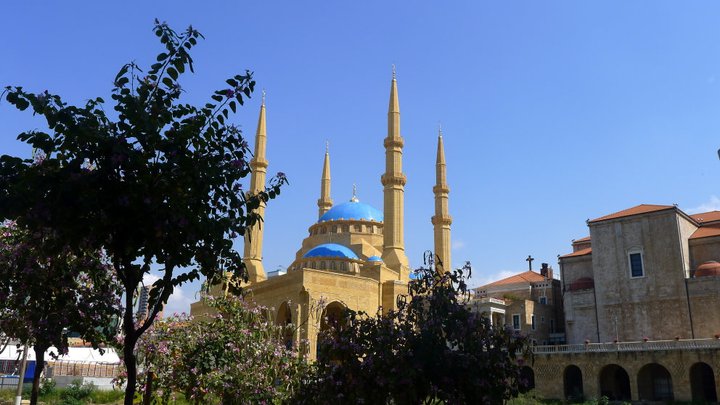
Still, with three days in Lebanon, I was able to indulge in Lebanon’s fantastic cuisine, relish the energy of Beirut, and enjoy some of the country’s most beloved tourist attractions.
Lebanon Itinerary Day 1: Beirut
Beirut is vibrant, dynamic, and cosmopolitan.
With one full day in Beirut, my travel companion and I walked the city from top to bottom and soaked in some of its history-laden highlights.
-
Beirut’s Central District
Lebanon’s tumultuous history is visible in Beirut’s architecture. The pockmarked city has a nauseating mix of war-ravaged buildings interspersed into its urban landscape.
In the area around Nejmah Square in the Central District of Beirut, post-conflict reconstruction efforts are particularly apparent.
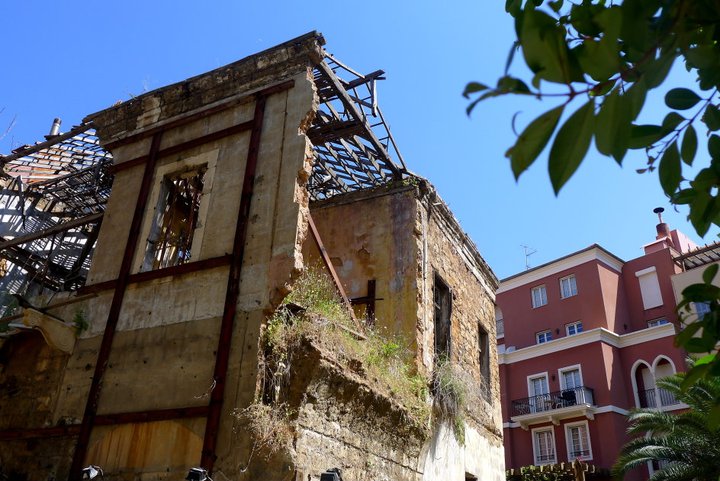
The area is home to reconstructed edifices, war-ravaged buildings, and quiet religious complexes—all laying side by side.
-
American University of Beirut Campus
We took an afternoon stroll through the American University Campus following our visit to Central Beirut.
The American University of Beirut is one of the most aesthetically beautiful institutions of higher learning in the world. Constructed by missionaries in the 1860s, the university’s campus spreads across more than 60 acres of manicured greenery overlooking the Mediterranean.
Fortunately, the campus’ stately 19th century edifices largely escaped the damaged caused by the Lebanon’s civil war.
-
The Beirut Corniche
I spent my first evening in Lebanon walking along Beirut’s oceanfront corniche with two friends who had accompanied me from Amman.
Much like the corniche in Muscat Oman, Beirut’s ocean-front walk is a favorite promenade spot. The corniche is a true meeting point for all segments of Lebanese society–Muslim and Christian, young and old, flirting couples and extended families. Girls jogged by in running shorts and tank tops, men sat out on the surrounding rocks hoping to catch a few fish and hundreds of small children zoomed around on bikes.
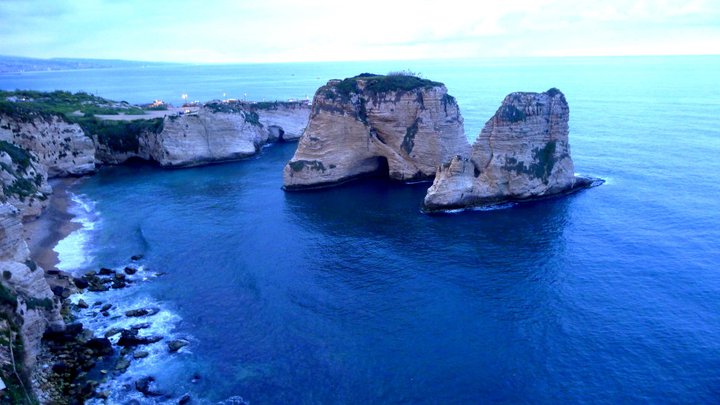
As I took in the sight, I kept having to remind myself that I was in the Middle East.
Day 2: Baalbek Ruins Day Trip
Just a few hours East of Beirut, the glitzy sophistication of the city gives way to conservative towns. The Beqaa Valley east of Beirut is home to the Baalbek Ruins and some of the country’s prettiest geography. It is also the heartland of Lebanon’s Hezbollah territory.
In Baalbek, signposts are decorated with the Hezbollah flag. The banner sways from buildings and is even draped over the back seat of cars. In fact, Hezbollah is such a part of the Baalbek experience that locals have begun to market t-shirts with the party’s logo for tourists. It is amusing to think that t-shirts of a group deemed to be a terrorist organization by the US government have become popular souvenirs for eager tourists.
-
Baalbek Ruins
Baalbek sits in the Bekaa Valley, surrounded by green rolling hills and snow-capped mountains.
The ruins themselves are wonderfully preserved. They include the Temple of Bacchus and the Temple of Jupiter—two of the Roman Empire’s grandest architectural feats.
The ruins of Baalbek are much smaller than I had anticipated, but they are perhaps the best preserved Roman ruins I have ever seen.
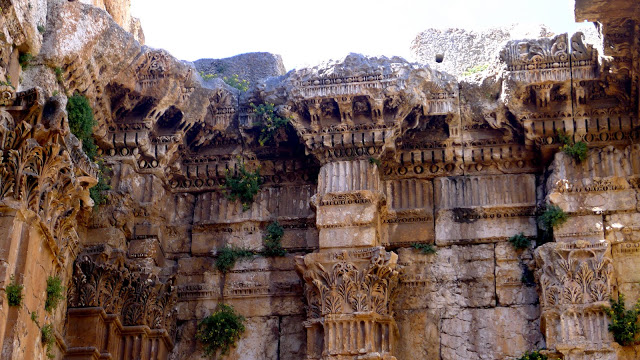
Despite the US State Department’s ample travel warnings and my own apprehensions about visiting the valley due to the recent news about Hezbollah kidnappings in the area, I felt completely safe the whole time.
Lebanon Day 3: Day Trip to Byblos and Jeita
During our final day in Lebanon, my friends and I were able to forget about the political predicament of the country and immerse ourselves in its surrounding natural beauty. Lebanon is distinct from its Middle Eastern neighbors in that it is the only country without desert.
Instead, the various shades of orange and brown that define much of the landscape in surrounding countries, are replaced by lush green hills and fields of colorful flowers.
-
The Jeita Grotto
We began our third day in Lebanon with a visit to the impressive Jeita Grotto—a karstic cave that is nestled in the hills North of Beirut. The stalagmite-covered cave was nominated as one of the new seven wonders of the natural world.
Despite the Jeita Grotto’s hype, I found it to be truly spectacular. The Jeita Grotto is deservedly one of Lebanon’s major tourist attractions. During the Lebanese Civil War, the cave was used as a store for munitions. Today, it supplies water for over 1,000 Lebanese citizens in addition to generating revenue from tourism.
There are two parts of the cave open to visitors–the upper cave and the lower cave. The upper cave extends over 2,000 meters into the mountains, though only 750 of them are accessible to tourists. A pathway winds its way around columns and stalagmites, passing through a long tunnel and over ponds of clear water that reflect the karstic formations overhead. The lower cave contains a large, underwater river that meanders through passageways and intricately decorated caverns.
In order to visit the lower caves, visitors can take a short boat ride down the river and amid the exquisite natural formations. I was a bit disappointed that the boat ride only lasted about ten minutes, because the river visibly extends deep into the mountains and we only visited the first 500 meters. Nevertheless, the entire experience was at once overwhelming and serene.
I wish I could have taken pictures of the grotto, but photographing the landmark is strictly prohibited.
Words simply do not do it justice.
-
Byblos Lebanon
At around lunchtime, my friend and I took a microbus from the Jeita Grotto to Byblos.
Byblos is thought to be the oldest inhabited city in the world, though the same title has also been given to Damascus and Jericho. Byblos is a small, touristy town that overlooks the Mediterranean Sea and contains a picturesque old city as well as a crusader castle and roman ruins. Byblos is an ideal getaway from the congestion and fast-paced life of cosmopolitan Beirut. Surrounding the ruins and town are fields upon fields of tall green grass and small yellow and red flowers.
In this quiet paradise, it is easy to forget the visible scars of war that plague the architectural landscape of the country’s capital.
Is Lebanon Safe to Visit?
Though I visited Lebanon in 2011, I believe Lebanon is still safe to visit.
Lebanon is made up of eighteen official religions. For the most part, people with cultural and sectarian differences live side by side. Yet at times, tensions flare violently and without warning.
As always, it is advisable to check current travel warnings and do your own research before booking a trip to Lebanon.
***
Lebanon is a land of contradiction. It is at once glamorous and squalid, peaceful and volatile, hopeful and devastated.
Only time will tell if Lebanon can put its painful history aside and reclaim its title as the “Paris of the East.”
